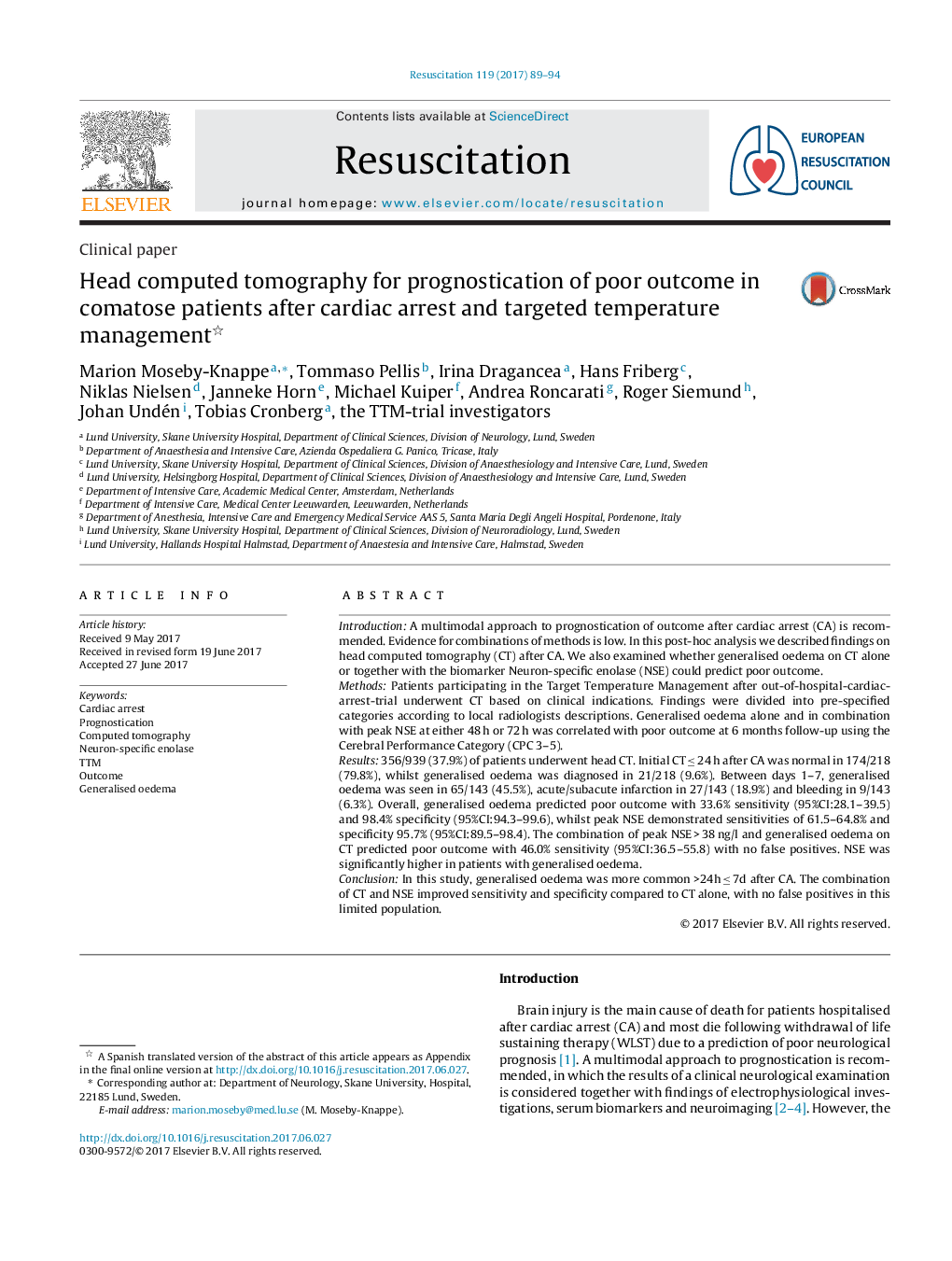| کد مقاله | کد نشریه | سال انتشار | مقاله انگلیسی | نسخه تمام متن |
|---|---|---|---|---|
| 5620161 | 1578965 | 2017 | 6 صفحه PDF | دانلود رایگان |
IntroductionA multimodal approach to prognostication of outcome after cardiac arrest (CA) is recommended. Evidence for combinations of methods is low. In this post-hoc analysis we described findings on head computed tomography (CT) after CA. We also examined whether generalised oedema on CT alone or together with the biomarker Neuron-specific enolase (NSE) could predict poor outcome.MethodsPatients participating in the Target Temperature Management after out-of-hospital-cardiac-arrest-trial underwent CT based on clinical indications. Findings were divided into pre-specified categories according to local radiologists descriptions. Generalised oedema alone and in combination with peak NSE at either 48 h or 72 h was correlated with poor outcome at 6 months follow-up using the Cerebral Performance Category (CPC 3-5).Results356/939 (37.9%) of patients underwent head CT. Initial CT â¤Â 24 h after CA was normal in 174/218 (79.8%), whilst generalised oedema was diagnosed in 21/218 (9.6%). Between days 1-7, generalised oedema was seen in 65/143 (45.5%), acute/subacute infarction in 27/143 (18.9%) and bleeding in 9/143 (6.3%). Overall, generalised oedema predicted poor outcome with 33.6% sensitivity (95%CI:28.1-39.5) and 98.4% specificity (95%CI:94.3-99.6), whilst peak NSE demonstrated sensitivities of 61.5-64.8% and specificity 95.7% (95%CI:89.5-98.4). The combination of peak NSE > 38 ng/l and generalised oedema on CT predicted poor outcome with 46.0% sensitivity (95%CI:36.5-55.8) with no false positives. NSE was significantly higher in patients with generalised oedema.ConclusionIn this study, generalised oedema was more common >24h â¤Â 7d after CA. The combination of CT and NSE improved sensitivity and specificity compared to CT alone, with no false positives in this limited population.
Journal: Resuscitation - Volume 119, October 2017, Pages 89-94
